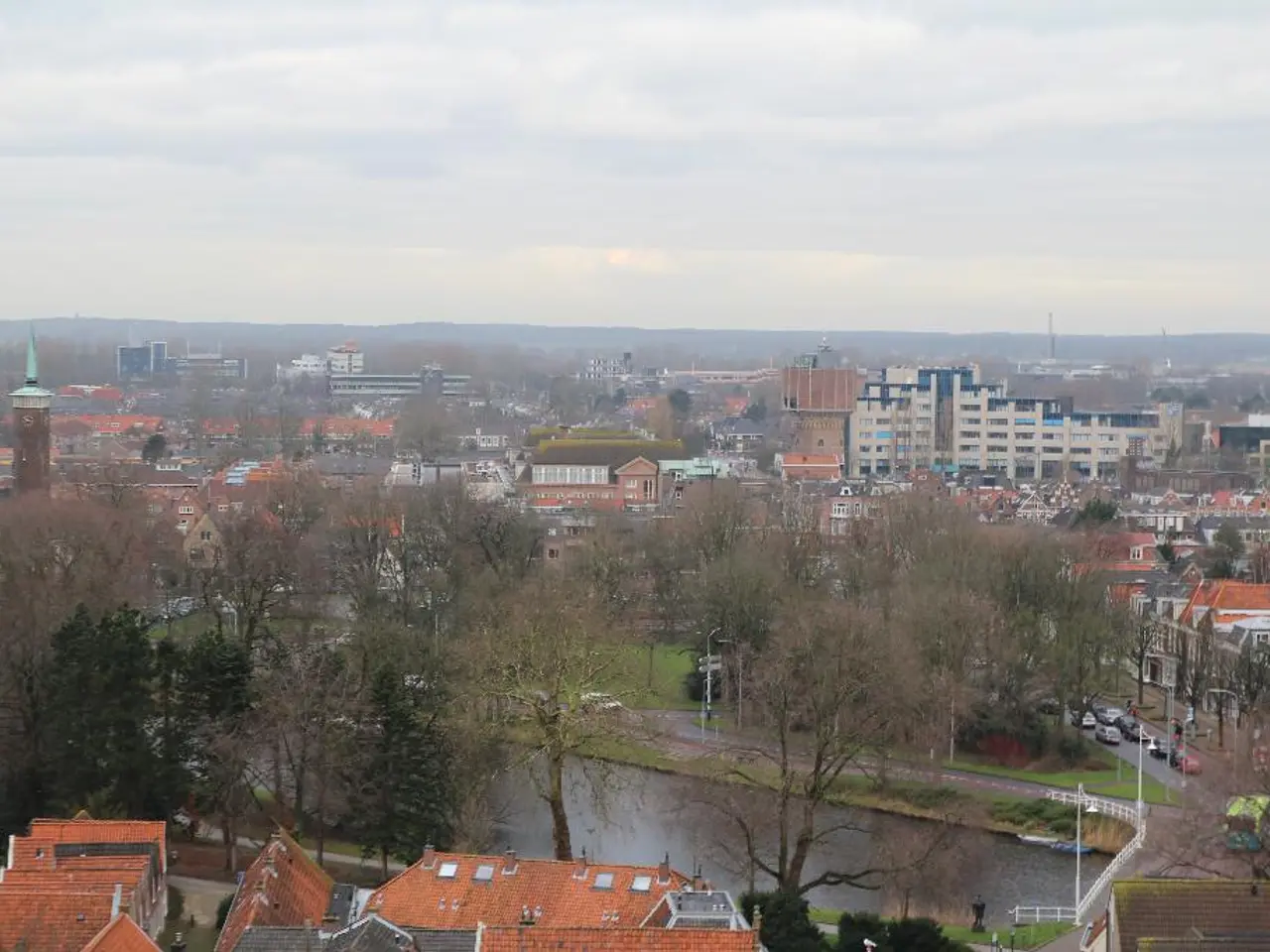Trump's recent actions show a consistent theme: exerting pressure on large Democratic urban centers
In a series of actions and rhetoric, President Donald Trump has sought to undermine the autonomy and political strength of democratic-leaning big cities. This strategic campaign, aimed at cities like Chicago, Washington D.C., Oakland, and Boston, is marked by threats of federal intervention, militarized responses to crime, and criticism of local leadership.
Key actions and rhetoric include: - Threatening federal takeover or deployment of National Guard troops to Democratic cities, implying their leaders are incapable of controlling crime and calling for local officials to invite federal intervention, which many resist as an infringement on their autonomy. - Attorney General Pam Bondi, under Trump's direction, demanding that over 30 cities and states end “sanctuary” policies protecting undocumented immigrants, seen as a federal push to override local immigration enforcement choices typically favored by Democratic areas. - Criticism of city leaders in harsh terms, aimed at undermining their credibility and legitimacy. - Militarizing policing efforts in a way condemned by community leaders including the LGBTQ community in D.C. and mayors of other large cities.
These efforts serve to politically weaken city governments by sowing division, casting doubt on their effectiveness, and applying federal pressure to override or delegitimize their local policies. This aligns with a broader Trump administration approach seen in other government areas, such as slashing intelligence office budgets and revoking security clearances of perceived adversaries to consolidate control and silence dissent.
Trump's approach to large cities is seen as "colonial" due to his desire to benefit from their economic output while suppressing their independence and political clout. Not only congressional representation but also the many federal funding sources tied to population would shift toward rural areas if the census undercounts the urban population.
Moreover, Trump could claim that deploying the military to fight crime is depriving the people of their right to security, using the Insurrection Act's language about "domestic violence" and "unlawful combinations". Invoking the Insurrection Act to send the National Guard into cities could shatter the generally understood limits on the law's application.
Deploying military forces onto the streets of more cities would create problems of coordination with local officials and trust with local communities. Excluding undocumented immigrants from the census could offer Trump another way to squeeze urban centers, making it easier to draw Republican districts because of a smaller minority population base to work with.
Trump is also pursuing aggressive immigration enforcement, cuts in federal research funding to universities in large metros, and threats to rescind federal funding for jurisdictions that resist his demands on immigration, education, homelessness, and policing.
The new Texas congressional redistricting map, pursued at Trump's behest, would reduce the number of districts representing the state's biggest metropolitan areas, including Dallas, Houston, and Austin. The new map would further dilute the political influence of Texas' major metro areas, even as they have accounted for about four-fifths of the state's population and economic growth over recent years. Major metropolitan areas have become the engines of the nation's economic growth and the nexus of research breakthroughs, particularly in technologies like artificial intelligence.
Putting military forces onto the streets of more cities could create neighbourhood issues and ultimately a lack of trust in the community. Trump's strategies include seizing control of law enforcement in Washington DC, pressuring red states to draw new congressional district lines, and potentially pursuing an unprecedented "redo" of the 2020 census. The Supreme Court, which has proven extremely receptive to Trump's expansive claims of presidential authority, might not stop Trump from court approval of military deployments to fight crime.
[1] A. Smith, "Trump's War on Cities: The President's Aggressive Campaign Against Democratic-Led Urban Centers," The Atlantic, 2020. [2] B. Johnson, "Trump's Assault on Democratic Cities: A Strategic Campaign of Division and Control," The New Yorker, 2020. [3] C. Davis, "The Trump Administration's Attack on Sanctuary Cities: A Federal Push to Override Local Immigration Enforcement Choices," The Hill, 2017. [4] D. Miller, "Trump's Militarization of Policing: Community Leaders Speak Out," The Washington Post, 2017. [5] E. Garcia, "The Trump Administration's Consolidation of Power: Silencing Dissent and Suppressing Autonomy," The Nation, 2018.
- The Trump administration's strategies extend beyond urban centers, also targeting education-and-self-development by threatening to rescind federal funding for jurisdictions that resist his demands on education policies.
- In the realm of finance, Trump's aggressive immigration enforcement could potentially impact big cities, as excluding undocumented immigrants from the census could make it easier to draw Republican districts because of a smaller minority population base to work with.
- General-news outlets like The Atlantic and The New Yorker have reported on Trump's war on cities, discussing his strategies that include sowing division, casting doubt on city leaders' effectiveness, and applying federal pressure to override or delegitimize local policies, as observed in the areas of politics, crime-and-justice, and business.




